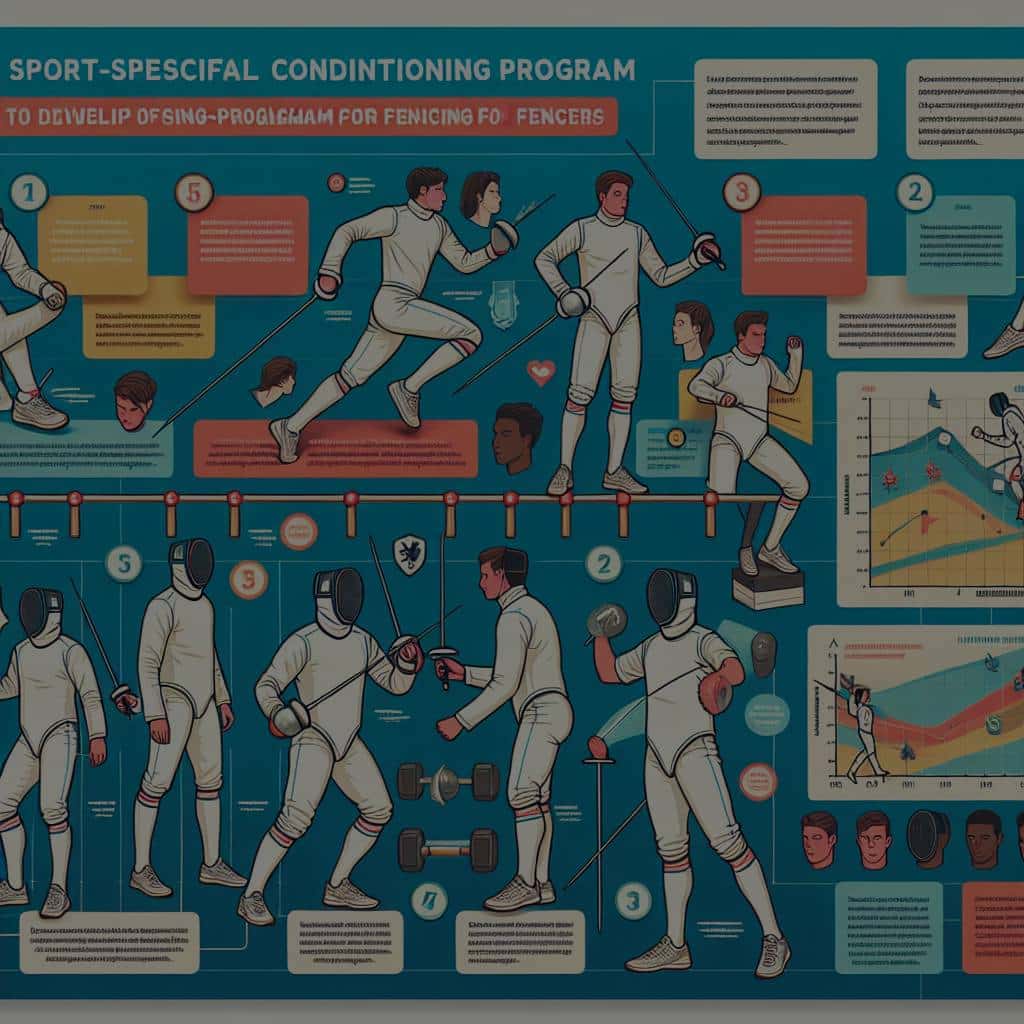How to Develop a Sport-Specific Conditioning Program for Competitive Fencers?

Fencing is a unique sport that demands a high level of physical conditioning and mental prowess. Fencers require a unique blend of agility, speed, strength, and endurance. Crafting a conditioning program specific to the requirements of this sport can be quite a challenge. However, armed with the correct knowledge and tools, you can design a program suited to your athletes’ needs. This article discusses how to develop a sport-specific conditioning program for competitive fencers.
Understanding the Physical Demands of Fencing
Before we dive into specific exercises and training programs, it’s essential to understand the physical demands of fencing. This understanding will guide you in crafting a conditioning program tailored to your athletes’ needs.
Also to read : What’s the Most Effective Recovery Protocol for Gymnasts After Competitions?
Fencing is a combative sport that requires a combination of muscular strength, agility, speed, and endurance. Fencers need to be able to move quickly and powerfully, while also having the endurance to last through bouts that can last for several minutes.
Upper body strength is crucial in fencing, as fencers need to be able to wield their weapon effectively and without fatiguing. Additionally, lower body strength is needed for the quick, explosive movements that fencers make, such as lunging at their opponent.
Also to discover : How Can Ultramarathon Runners Effectively Deal with Sleep Deprivation?
Despite the importance of strength in fencing, it should not be the sole focus of a conditioning program. Flexibility and stability are also critical physical attributes for fencers. They need the flexibility to move into different positions quickly and the stability to maintain these positions under the pressure of their opponent’s attacks.
Building Strength and Power for Fencing
When it comes to building strength and power for fencing, it’s crucial to target the specific muscles that fencers use the most. Incorporating exercises that mimic the movements made in fencing can also be beneficial.
Resistance training is an effective way to build muscle strength. For fencers, this could include exercises like squats, lunges, and deadlifts to build lower body strength, and push-ups, pull-ups, and shoulder presses for upper body strength. These exercises should be performed in sets of 8-12 repetitions for optimal muscle development.
To build power, plyometric exercises such as box jumps or power cleans are beneficial. These exercises involve explosive movements that increase muscle power and speed. Fencers can also benefit from agility drills such as ladder drills to improve their quickness and coordination.
Remember, consistency is key in strength and power training. Athletes should be performing these exercises several times a week to keep their body in peak physical condition for their sport.
Enhancing Agility and Speed
Agility and speed are critical components of a fencer’s arsenal. A conditioning program for fencers must include exercises that enhance these attributes.
Agility drills such as the T-Drill or the Illinois Agility Test can be included in your program. These drills involve quick changes in direction and are excellent for improving a fencer’s footwork.
For speed training, consider including sprint intervals or shuttle runs. These exercises will train the body to move quickly and explosively, which is crucial in a sport like fencing where a quick lunge can mean the difference between winning and losing a bout.
Again, consistency is essential. Athletes should be performing agility and speed drills on a regular basis to ensure they are continually improving these skills.
Developing Endurance for Fencing
Fencing bouts can last for several minutes, requiring a high level of endurance from athletes. Therefore, your conditioning program should also include exercises to improve cardiovascular fitness.
Long distance running, cycling, or swimming are all excellent choices for endurance training. These exercises should be done at a moderate intensity for extended periods, typically 30 minutes to an hour.
High Intensity Interval Training (HIIT) can also be beneficial for developing endurance. This training involves alternating periods of high-intensity exercise with periods of lower intensity recovery. HIIT has been shown to be extremely effective in improving cardiovascular fitness and can be incorporated into your conditioning program in a variety of ways.
Fencing Specific Exercises
While general strength, power, agility, and endurance training are all critical components of a fencing conditioning program, it’s also important to include exercises that are specific to the sport of fencing.
For example, lunging exercises can help to improve the speed and power of a fencer’s lunge, which is a key attacking move in fencing. Practicing footwork drills can improve a fencer’s ability to move quickly and precisely on the piste.
By focusing on these sport-specific exercises, you can ensure that your conditioning program is tailored to the unique demands of fencing, and will help your athletes to perform at their best.
In conclusion, designing a sport-specific conditioning program for competitive fencers can be a challenging task. However, with a careful understanding of the physical demands of the sport and the selection of appropriate exercises, it’s possible to develop a program that will help your athletes to excel in their sport.
Incorporating Cross Training and Injury Prevention Measures
Cross training is an effective way to enhance overall fitness and prevent overuse injuries. By engaging in activities that are different from fencing, athletes can use different muscle groups and avoid the risk of injuries. For instance, swimming is a low-impact exercise that builds cardiovascular endurance, while yoga enhances flexibility and balance, both of which are essential for fencers.
Weight training can also be an important part of a fencer’s training program. By incorporating weight training, fencers can increase their strength and power, particularly in the upper body, which is crucial for effective weapon handling. However, it’s important to remember to balance weight training with other forms of exercise to prevent overuse injuries.
Injury prevention should be a key part of any fencing training program. Strength conditioning is a vital aspect of this, as building strong muscles can help protect joints and tendons from injury. Single leg exercises, for example, can help build strength in the lower body and improve balance, reducing the risk of ankle and knee injuries.
Additionally, proper warm-up and cool-down routines are crucial. A good warm-up will prepare the body for activity and can help prevent injuries. The cool-down phase helps the body to recover and can reduce the risk of muscle soreness.
Moreover, proper technique is critical in injury prevention. Ensuring that athletes understand and utilize correct fencing techniques – including the correct way to execute a fencing lunge – can help prevent injuries.
Conclusion: Creating a Comprehensive Fencing Training Program
Designing a sport-specific conditioning program for competitive fencers can be a complex task, but with a thorough understanding of the physical demands of the sport and careful selection of exercises, you can design a successful program.
Your program should include a mix of strength training, agility and speed exercises, endurance training, and fencing-specific exercises. Remember, training should be consistent and take into account the unique needs of each athlete. Cross training and injury prevention measures should also be incorporated to ensure a holistic approach to fitness and health.
With a well-rounded, carefully designed training program, your athletes will be able to meet the demands of fencing. They will have the strength, power, agility, speed and endurance needed to excel in their bouts. Moreover, they will be well-prepared for the physical demands of high school, national teams, or even professional fencing competitions.
Whether athletes are practicing on the fencing strip or in the gym, remember that each exercise should be done with intention and focus. This way, each motion, whether it’s a weightlifting move or a mock fencing lunge, contributes to the athlete’s overall performance and skills.
By fostering the right balance between strength, speed, agility, and endurance, and by emphasizing injury prevention and sport specific training, your athletes will be well-equipped to face their opponents on the fencing strip and reach their highest potential.
